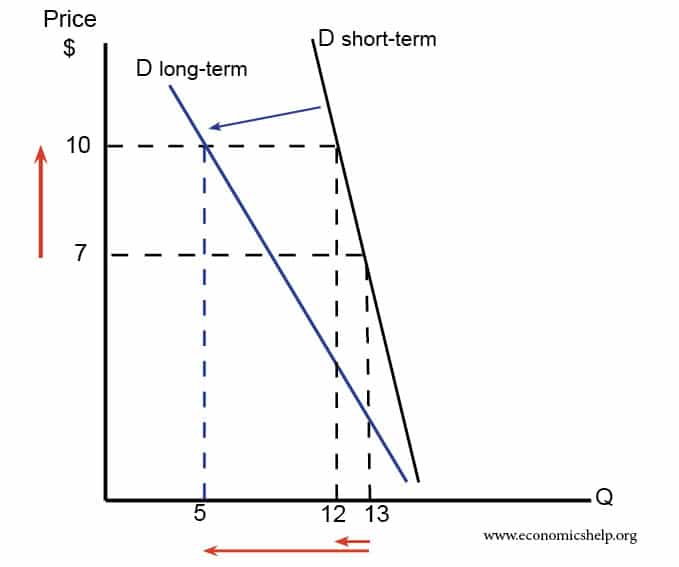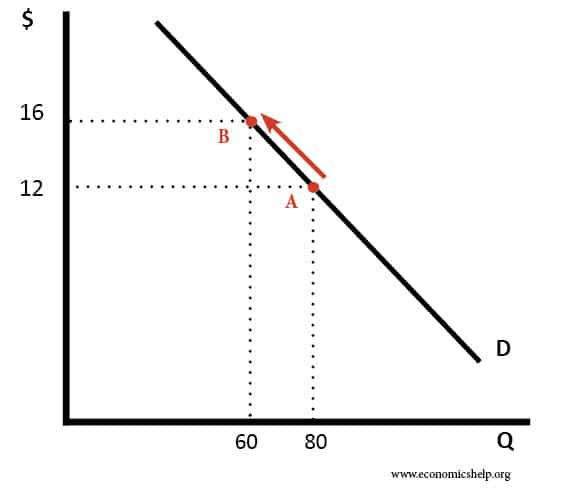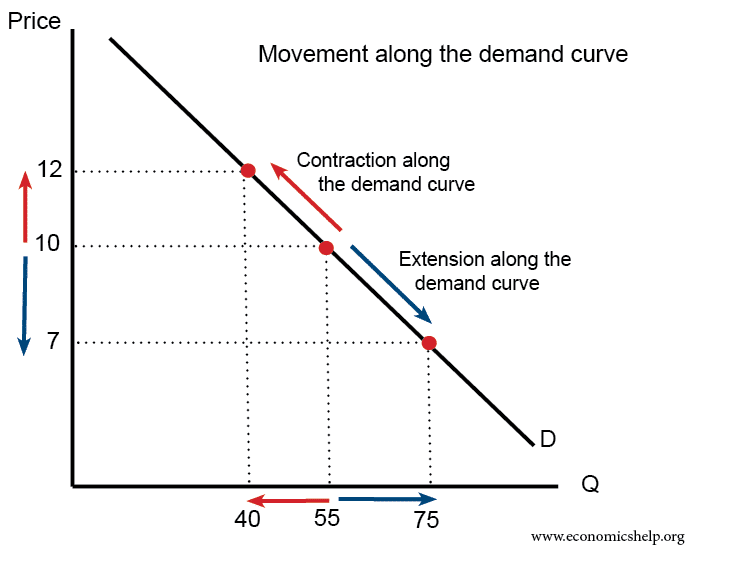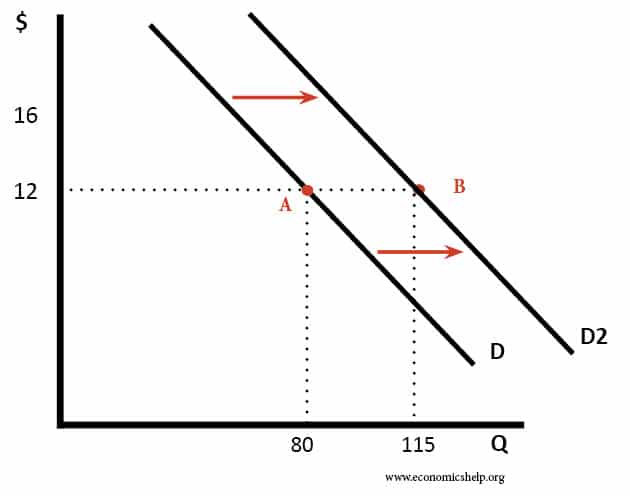A shift in demand means at the same price, consumers wish to buy more. A movement along the demand curve occurs following a change in price.
Movement along the demand curve
A change in price causes a movement along the demand curve. It can either be contraction (less demand) or expansion/extension. (more demand)
Contraction in demand. An increase in price from $12 to $16 causes a movement along the demand curve, and quantity demand falls from 80 to 60. We say this is a contraction in demand
Expansion in demand. A fall in price from $16 to $12 leads to an expansion (increase) in demand. As price falls, there is a movement along the demand curve and more is bought.
A change in price doesn’t shift the demand curve – we merely move from one point of the demand curve to another.
Shift in the Demand Curve
A shift in the demand curve occurs when the whole demand curve moves to the right or left. For example, an increase in income would mean people can afford to buy more widgets even at the same price.
The demand curve could shift to the right for the following reasons:
- The good became more popular (e.g. fashion changes or successful advertising campaign)
- The price of a substitute good increased.
- The price of a complement good decreased.
- A rise in incomes (assuming the good is a normal good, with positive YED)
- Seasonal factors.
Evaluation – Time period
In the real world, a higher price could cause a movement along the demand curve, but in the long-term, it could cause a shift as consumers respond to the persistently higher prices.





Wow! Thanks so much. It is very easy to understand. This is exactly what I needed.
I can’t believe I didn’t understand this stuff until I read this. My economics book doesn’t explain anything very well, especially not the difference between movement along the demand curve and a shift in the demand curve
So thank you so much, this is going to be extremely helpful for the tests I get to retake tomorrow!
I can teach you if you need any help let me know it will be my pleasure 😊
Can’t understand the difference between movement in demand curve and shift
hi
can u say when the demand curve shifts left
when there is a :
1. decrease in individual income
2. Negative change in taste and technological advancement bringing superior products ( we don’t want windows 1998 anymore)
3. population is decreasing in an economy
4. price of substitute product goes down (coffee price goes down, demand of tea will go down)
5. Price of complementary products going up (sugar price goes up, demand for tea will go down)
6. If the price of a product is supposed to fall in the future (future expectation), the demand for that product goes down.
all of these factors normally cause a leftward shift in demand curve.
this is so wonderful
such a simple and comprehensive explanation
concise and accruate
wow!….I can now wear a smile on my face having understood the concept…..it’s so precise and easy to understand.Thankyou.
Waoooo that’s great . It’s too helpfull for all students . Thank you so much to make me understood very easily . Thank you 😌
Good work
Well understood now,,, it’s so precise and easy to understand.Thank you
Really easy to understand thankuu😊
Wow now i understand
Thanks, Now I’m really understand.
This economics is so interesting! it is understandable… I hoped for this
That was so helpful .Gracias.
This explanation is top notch
Thank you for charity posting.
It’s cleare and easy to understand